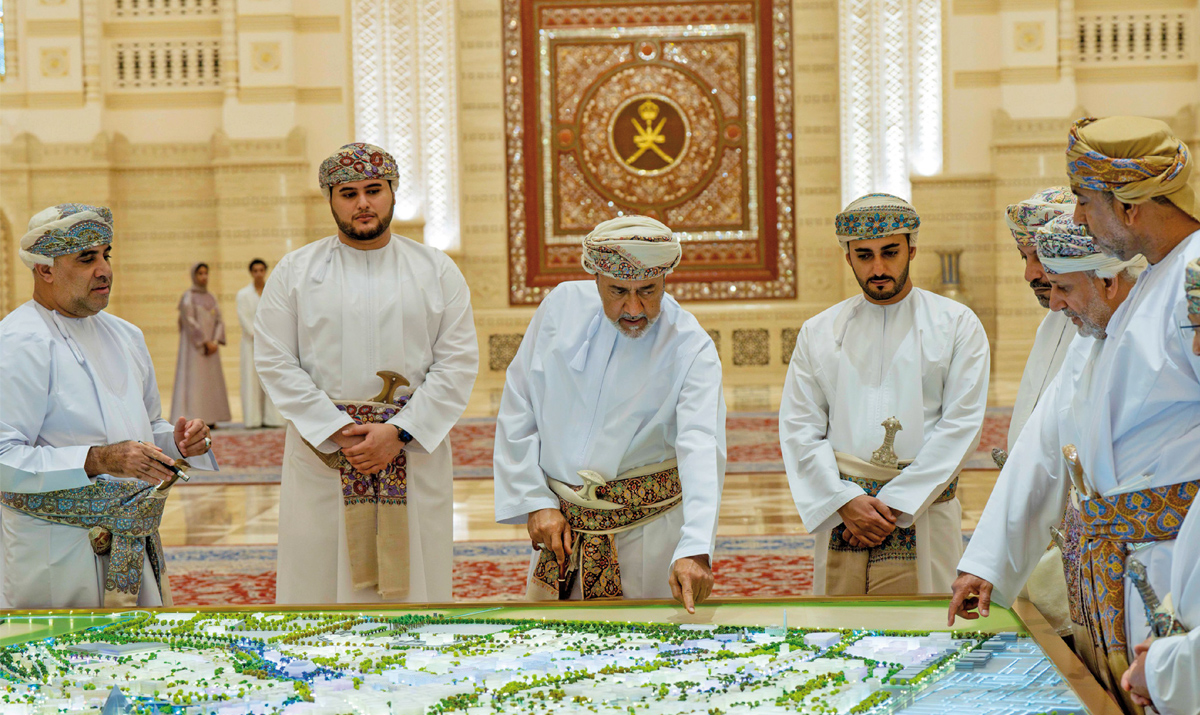
17 Nov Oman: Tale of transformation
Oman’s ability to diversify its economy and empower its young people has cemented the nation as a leading economic powerhouse in the Middle East
Oman’s story over the past 50 years has largely been one of success. From the moment the late Sultan Qaboos bin Said Al Said rose to the throne, the country began to transform and in the space of five decades became a thriving nation with a modern economy — thanks in part to a booming oil and gas industry.
However, even in the late 1990s, Oman began to make active plans to diversify its economy and lessen its reliance on the oil and gas sector. This came into even greater focus in 2020 when Sultan Haitham bin Tariq endorsed the launch of Vision 2040, a blueprint for the economic and social development of the Sultanate.
At the heart of the initiative, which aims to diversify the economy, create sustainable cities and accelerate privatization, are sectors that are seen as ripe for growth. Encompassing everything from manufacturing and ICT to agriculture and tourism, one of the keys to its success is empowering the Omani people.
“By prioritizing goods and services sourced from within Oman, the strategy aims to not only stimulate local industries but also ensure that financial resources circulate within the national economy to propel growth from within,” says Khamis bin Saif Al Jabri, Chairman of Oman Vision 2040. “By fostering ties with academic institutions and training centers, our plan aims to ensure the Omani workforce is adeptly equipped with the requisite skills to meet the demands of a modern economy.”
With more students enrolled in schools and universities than ever before, the government is investing in policies to improve the quality of education and create a dynamic workforce that is willing to embrace entrepreneurship.
In addition to supporting local enterprises, the government has unveiled a new tourism strategy that aims to create more than half a million jobs in the sector and increase the total accommodation available in the country to more than 80,000 rooms by 2040. One area within the sector that appears ripe for development is adventure travel, with plans recently being unveiled for numerous new projects that include cable cars, ziplines and mountain trails.
Oman also aims to attract an increasing number of visitors by highlighting its cultural heritage. The Sultanate is rich in customs and traditions, while its souqs are bustling with traditional art forms such as Arabic calligraphy, pottery, weaving and woodcarving.
“We want to embrace modernity while also valuing our Omani identity, traditions and heritage. We are investing in our youth to ensure they remain rooted in our rich history and cultural legacy,” explains Al Jabri. “This extends to promoting cultural tourism and leveraging our unique historical and cultural landmarks. Central to the Oman Vision 2040 initiative is the belief that tourism is not merely transactional but a profound exchange of cultures, stories and experiences. By focusing on sustainable infrastructure, encouraging private sector participation and fostering international partnerships, Oman aims to position itself as a global tourism beacon. We aim to merge our economic ambitions with cultural preservation.”
Oman boasts a long and fascinating history dating back to ancient times and visitors can explore its many historic landmarks and monuments, including the UNESCO World Heritage Site of Bahla Fort. The country is also known for its traditional arts and crafts, which can be viewed at the Oman National Museum, while numerous artisans still demonstrate these skills throughout the country. Such is the importance of preserving Omani identity, that the government plans to host numerous exhibitions and events in leading museums around the world that promote the culture of the Sultanate. There is also a growing impetus for the promotion of traditional games and sports leagues that include dhow racing, falconry and camel racing.
While there is a focus on protecting its past, Oman is also laying the groundwork for the future. The country has gradually emerged as a preferred destination for foreign investment, with its strategic location and the government’s commitment to developing the economy helping the Middle Eastern nation to become an ideal place for businesses to invest.
The government has been working to strengthen its legal and regulatory framework, offering businesses the stability they seek in order to grow and prosper. There has also been a commitment to reduce bureaucratic red tape to make it even easier for companies to set up and operate in Oman. With a clear understanding of what is needed to take the country forward, Oman appears set to prosper in the decades ahead.
